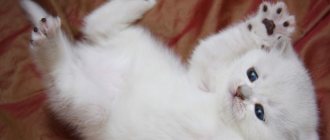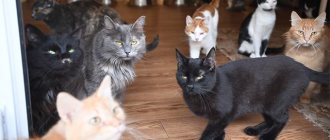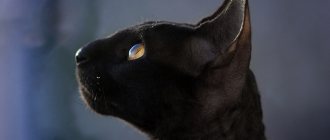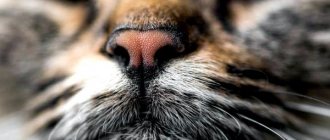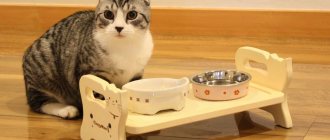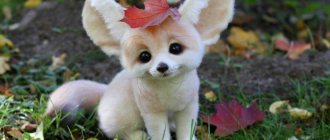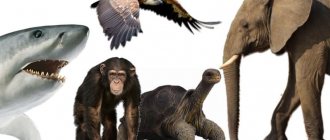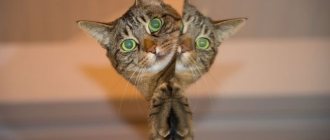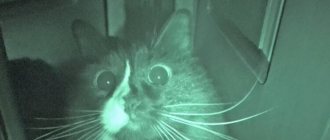Your overwhelming urge to grab that cute little puppy and hug him with all your might is more than just a feeling. This is science.
How did you react the last time you saw an adorable bunny, a playful kitten, a big-eyed bear or a cute puppy? Your warm feelings are not accidental. Scientists are discovering that they are common to all people (or almost all).
Disney cartoonists used cute traits to create memorable characters such as Bambi, Dumbo and Pluto. Something similar is done in different cultures on all continents.
Meanwhile, the pet industry is booming. Certain organizations are entirely dedicated to rescuing abused animals. Commercials tug at our heartstrings and provoke outrage simply by showing a poor animal.
It's no wonder that conservation organizations choose the cutest of our little friends as their flagships. Just show us an adorable endangered animal like a giant panda and we'll get your back.
Have you ever wondered why we find some animals so adorable? Interestingly, this question has generated a lot of curiosity among both the creationist and evolutionist communities. The evolutionist asks, “What survival benefits does being “charming” provide to an organism?” The creationist asks, “Did the Creator intentionally include “cuteness” in His creation plan?”
Attractiveness in the Eye of the Evolutionary Observer
Konrad Lorenz, an Austrian zoologist and the founding father of the science of animal behavior, is credited with initially exploring this “cute” question. He studied various animals and identified traits that were considered cute. To be cute means that the creature must have a large head compared to the body, round cheeks, a round body, large eyes below the center of the head, a prominent forehead, and a soft body surface. He called these traits kindchenschema, which translates to “childish schema”—or, more simply, as pretty as a doll.
Research conducted in 2016 shows that when adults see cute traits in children, it brings positive emotions: love, affection, security, improved social relationships, pleasure, decreased aggression and increased empathy and compassion.
Do animals like monkeys exhibit this behavior? Research has not yet been completed, but still leans toward a negative answer.
The human response to adorableness is different from that of animals because we feel attracted and want to protect not only humans but animals as well. The cute traits we see in our own children are also characteristics of many of the young of other living things. Research shows that when people watch cute animals, mental activity increases, as well as in the part of the brain that is responsible for decision making. When shown pictures of animals that require care at birth and animals that do not require care, people think the former are cuter. Like human babies, cute cubs evoke deep emotions of love, care, sympathy, protection and pleasure in adults.
Interestingly, interaction with animals stimulates the production of a hormone called oxytocin, which leads to feelings of happiness and increased levels of trust. This hormone also better prepares the body to heal and grow new cells.
In a 2012 research paper published in the Public Library of Science/PLOS, scientists reported on three studies that tested how images affected people's performance. The results show that cute images evoke positive emotions, which lead to increased mental focus and more cautious behavior. In other words, viewing images of cute animals can induce a desire for care and careful behavior not only towards animals, but also while driving or office work.
Evolutionists offer two ideas to explain our attraction to both children and young. The first says that we are attractive because baby animals look like baby humans, and we are evolutionarily programmed to find the former attractive. Protecting our own interests is critical to our development and survival. Another idea is that empathy for baby animals allows us to bond better with them, and this bond gives us some kind of evolutionary advantage, although the reason for this advantage is unclear.
But is there something more delightful in this, something that the eye of an evolutionist does not see?
Why are we so caring?
In nature, each type of animal is born and grows in its own way. After birth, some species may be immediately adapted to survive on their own, and some critically require care from their parents.
We don't know if other adult animals are as "sensitive" to babies of other species as we are. But it is assumed that we have this strong nurturing instinct because our children need parental care longer than the children of other animals.
Our human reproductive system is designed in such a way that our babies are born completely defenseless and are completely dependent on the care of adults for many years. Young children cannot find food on their own, defend themselves, or even just walk. Therefore, our desire to care for them is extremely important for the maintenance of our species.
It is also interesting that the awakening to give care to a sweet creature does not apply only to those who already have or have had a small child. The desire to care manifests itself in everyone, even in older children.
So as long as photos of kittens get a lot of likes on the Internet, our human species need not worry about its continuation.
Attractiveness and attributes of the Creator
When you compare humans to different animals, especially mammals, they actually have a lot in common. Evolutionists argue that a high degree of similarity suggests that we are all descended from a common ancestor. Creationists interpret similarities as evidence of a single, common Creator. But why did God create similarities between humans and animals in the first place? Why not make humans completely different from the animal kingdom, especially mammals such as monkeys and black bears?
In Genesis 1:28, God blessed the people created in His image and said to them:
“Be fruitful and multiply, and fill the earth, and subdue it, and have dominion over the fish of the sea, and over the birds of the air, and over every living thing that moves on the earth.”
Is it possible that God created the similarity to facilitate our dominion (God's command that we rule His creation)?
Think about your closest friends. Don't we tend to develop deeper relationships with people with whom we have a lot in common? Wouldn't our call to rule be easier if we ruled beings who shared characteristics with us? There is no doubt that we are more inclined to manage creation and its creatures more wisely if their features attract our attention and stimulate feelings of care and protection.
The above suggests that God created varying degrees of similarity and attractiveness to facilitate our relationships with the organisms under our care. It is these similarities that have inspired humanity to expand our general knowledge of the world, and this has led many medical scientists to study in detail the biology of animals that share the greatest similarities with humans, such as mice and pigs, to improve the health and well-being of both humans and animals .
Relational connection is consistent with God's personal attributes. God is infinitely loving because a loving relationship characterizes the Father, the Son, and the Holy Spirit. Moreover, the verse in Romans 1:20 suggests that God created the world and its creatures as a physical illustration of His invisible attributes. Since the capacity for personal relationships is one of these attributes, we should see it manifested in varying degrees throughout creation, not just in humans.
Let's dive deeper into this idea. When early theologians tried to figure out the meaning of the one God called Father, Son and Holy Spirit, they noticed that each designation referred to God, but within the one God there were differences among the three. The word they chose to distinguish them was Person. They concluded that the best way to explain the Trinity was that three Persons constituted one God.
A Google search for the word “man” will reveal many definitions proposed by various theologians. Characteristics of a person include: uniqueness, activity, intelligence, freedom of choice, feeling, thinking, problem solving, discrimination, memory and attitude. God possesses all these qualities and many more in a perfect and wonderful way.
Everyone would agree that humans have the above-mentioned characteristics, but do animals have them? Biological studies have shown that some animals exhibit multiple personal and relational attributes to varying degrees. Indeed, each creature has unique characteristics - even among the lower spiders, which make their webs so distinct that individual species can be identified by the pattern! Pet owners often talk about the personality of each pet, and they are all different, be it dogs, hamsters, birds or fish.
Could God also illustrate many of His attributes, to varying degrees, throughout the animal kingdom? Is it possible that humans can have relationships with animals not only because they exhibit similar traits that make them adorable, but also because they have personalities? What does it mean when we say that our pets have a “personality”? This does not mean that they have "personhood" in the legal sense, with rights before the law. But it does point to a unique combination of traits that makes each of these animals special. Every creature glorifies God in a way that no other creature can, each having a special purpose in God's plan (Psalm 149:10-13). And we are called to care for His creation as He does, including His care for the sparrows and lilies (Matthew 6:26-30).
Could we have relationships with animals if they did not have the traits that enable us to communicate? Naturalists who have enjoyed encounters with all kinds of wild animals over the years, including black bears, know that each is a unique creature with varying degrees of intelligence, behavior, emotion, cuteness, and relational qualities.
Ask any farmer who knows every cow in his herd by name, even if he has hundreds of them. He can tell you about the quirky habits and preferences of each of them. The same applies to shepherds, zookeepers who care for big cats, monkeys, elephants, flamingos or snakes, and field biologists who study birds, ants or spiders!
If each animal has different but lesser degrees of some characteristics with which we can relate, combined with kindchenschema, then this combination can greatly facilitate our dominion.
Close attachment
You may have noticed more than once how your pet seems to be “kneading dough,” pressing its paws against a soft and pliable surface (a blanket, pillow, or even human skin). This movement allows kittens to receive milk from their mothers. However, what motivates them to do this in the case of a person?
Mayan Ambassador's Tomb Reveals Rare Details of Mayan Officials' Lives
When to spray the garden in spring: choosing the right weather
Volunteers from France will spend 40 days in a cave without electricity or smartphones
It is believed that in this way adult animals establish a connection with a person, similar to the connection between a kitten and a cat. They are prompted to such attachment by the feeling of human care: such a connection seems to imitate the relationship between parent and child.
Most of the research leading to such an unusual fact was carried out mainly on dogs. However, recent experiences show that despite their self-sufficiency, many cats become strongly attached to their owners.
Anatomy of cuteness
Many animals have certain characteristics that are designed to trigger a nurturing response in our brains. Let's look at a photo of a cute kitten.
Round head : The heads of young animals are large compared to their bodies.
Broad forehead : Young animals are born with large brains already full of neurons.
Large eyes : Some young animals are born with developed eyes that can see very well.
Full cheeks : Young animals need strong muscles to begin suckling immediately.
Round body : Young animals are born with extra fat reserves.
Button Nose : Young noses are small and undeveloped and can grow significantly over time.
Soft surface : Newborn animals' skin is loose, so it can stretch as it grows.
Language
When a cat licks your skin, the sandpaper sensation is caused by the papillae on its tongue. They look like tiny needles made of keratin, and their main function is to help the animal eat and tidy its fur. Thanks to these needles, cats can pick up small pieces of food and lick meat from bones.
While drinking, cats use their tongues to establish a delicate balance between gravity and inertia. The tongue only lightly touches the surface of the liquid and, thanks to special movements, creates an upward flow of water. The animal manages to close its mouth before gravity causes the water to fall back into the bowl. Cats lap at a rate of four times per second, which is too fast for the human eye to detect.
The Human-Animal Bond: Praise God
Medical researchers increasingly understand the value and importance of animals in helping people with disabilities and severe emotional or mental trauma. More and more, therapists are prescribing service dogs for people who are struggling with depression. I have seen many examples of the power of these bonds to comfort, help and heal. In fact, both sides win. For example, I have seen a dog help a soldier avoid a panic attack by cuddling and licking him. In return, the soldier takes care of the dog physically and emotionally; dogs are designed by the Creator to be social animals and benefit from healthy relationships. This is just one of many examples where trained animals improve the emotional and physical health of both people and animals. I was told about a horse, Comet, who was abused and experienced emotional healing through the gentle treatment of people who believed in Jesus Christ. She now takes part in equine therapy for girls who have suffered from abuse and drug addiction.
One girl was especially touched by this horse. The first day they met, the horse did not approach any person, but headed straight towards her. There seemed to be an immediate understanding and an emotional connection between them. This horse is like a bridge that will ultimately help the girl learn to trust people again. At the same time, the previously abused horse learned to trust and help people who had been hurt.
The ultimate goal for a girl is a renewed and transformed mind as the Spirit of God uses all of these mechanisms to bring her into a healthy relationship with Him. If the horse were not created with varying degrees of attractiveness and resemblance to us, how could humans care for, protect and bring healing to this animal? On the other hand, if these traits were not present in a horse, would it be possible to use it as a therapeutic bridge for the emotional and spiritual healing of another person?
Ears
Cats' ears have 32 muscles that allow them to rotate 180 degrees to accurately determine the source of sound. Although dogs are famous for their hearing, cats are actually better at hearing as they can distinguish higher pitched sounds and even detect smaller variations in tone. But even despite excellent hearing, a cat can simply ignore your call.
The vestibular apparatus in the inner ear of cats provides balance and orientation on the ground, and therefore the animal always knows where is up and where is down. Thanks to this biological mechanism, cats almost always land on their feet.

